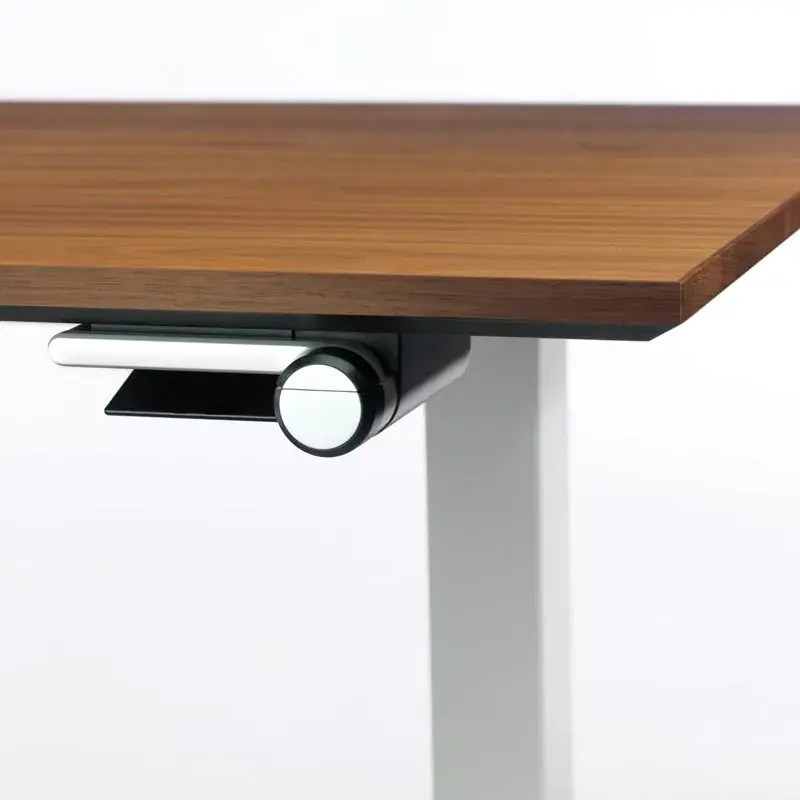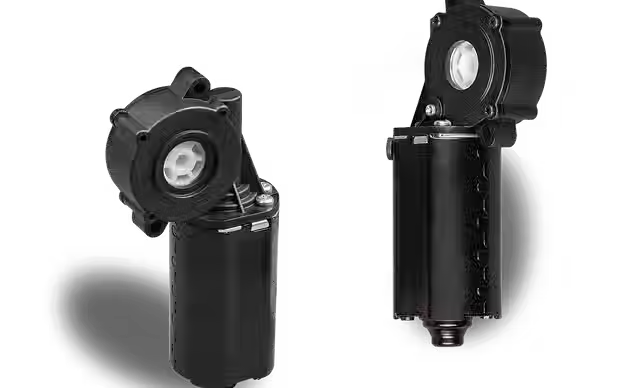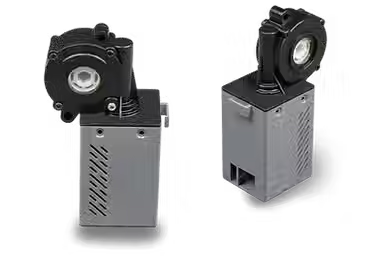Understanding Brushless DC Motors for Height-Adjustable Desks: A Comprehensive Guide
- Xie
- May 10
- 8 min read
Updated: May 11

In recent years, the demand for ergonomic office furniture, especially height-adjustable desks, has surged. At the heart of many of these modern workstations is the technology that powers them: the Brushless DC (BLDC) motor. The reliability, efficiency, and quiet operation of DC motors make them the perfect choice for adjustable desks. But what makes them stand out in the world of ergonomic solutions?
In this detailed guide, we’ll dive into the inner workings of brushless DC motors, how they are controlled, and their role in creating the smooth, seamless desk experience we’ve come to rely on. Whether you’re looking to understand the nuances of controlling a brushless DC motor or curious about the various parts that make up a DC electric motor, we’ve got you covered.
MEI MOVE DC Motor Solutions Guide:
What Is a Brushless DC Motor?
A Brushless DC motor, often abbreviated as BLDC motor, is a type of electric motor that operates without the traditional brushes found in other motors. These motors are highly efficient, produce less noise, and require less maintenance compared to their brushed counterparts.
In the context of height-adjustable desks, brushless DC motors offer several key advantages:
Low Noise Levels: Brushless motors are quiet in operation, making them ideal for office environments.
Precision and Speed Control: They allow for smooth and precise height adjustments, crucial for ergonomic settings.
Energy Efficiency: With lower power consumption and heat production, BLDC motors help reduce overall energy use, which is beneficial for long-term desk operation.

Key Components of a DC Electric Motor
To truly understand how controlling a brushless DC motor works, it’s important to first break down the basic components that make up a DC motor. Here’s a look at the key parts of a DC motor:
Stator: This is the stationary part of the motor that generates a magnetic field. In brushless motors, the stator is energized by an external current.
Rotor (Armature): The rotating part that interacts with the magnetic field, causing the motor to spin.
Commutator (in Brushed DC motors): A device used to reverse the direction of current in the rotor windings. Brushless DC motors do not have a commutator; instead, they rely on electronic controllers.
Brushes (in Brushed DC motors): Conduct electrical current between the stationary and moving parts. Brushless motors, however, use electronic circuits to eliminate the need for brushes.
Electronic Controller (for BLDC motors): In place of brushes and commutators, BLDC motors use an electronic controller to regulate the motor's speed and torque.
How Does Controlling a Brushless DC Motor Work?
Controlling a brushless DC motor is a sophisticated process that involves adjusting the motor’s speed and direction. Here's how it's typically achieved:
Speed Control: The speed of a BLDC motor is controlled by varying the voltage supplied to the stator windings. One of the most effective methods for speed control is Pulse Width Modulation (PWM). PWM works by rapidly turning the motor’s power on and off, varying the time the motor is on (the pulse width) to adjust the average power supplied to the motor.
Direction Control: The direction in which the motor spins is governed by the sequence of energizing the motor’s windings. By reversing the sequence, the direction of the motor can be changed.
Feedback Systems: Modern brushless motors often include feedback mechanisms such as Hall sensors, which provide the controller with real-time data about the rotor’s position. This enables precise speed regulation and smoother operation.
In adjustable desks, this precise control ensures that the desk raises or lowers at a consistent rate, without jerky movements that could disrupt the user's workflow.
Advantages of Brushless DC Motor Speed Control
Brushless DC motor speed control offers several key advantages, especially when incorporated into products like height-adjustable desks:
Smooth Transitions: With speed control, the desk moves up and down seamlessly, providing a smooth user experience.
Energy Efficiency: BLDC motors use less energy than their brushed counterparts, leading to a reduction in electricity consumption and lower operational costs.
Minimal Maintenance: Because there are no brushes to wear out, maintenance is significantly reduced. This leads to longer motor life and fewer service calls.
Precision and Responsiveness: Speed control enables users to make minute adjustments, ensuring the desk is set to their exact preferences.
The Role of DC Motor Brushes in Brushed DC Motors
While brushless motors are gaining popularity, DC motor brushes still play an important role in many applications. These brushes are responsible for transferring electrical current to the rotating part of the motor, the armature. The brushes press against the commutator and allow the current to flow to the armature windings, enabling the motor to spin.
However, in the case of brushless motors, there are no brushes to wear out, which is why they are often preferred in applications like adjustable desks. This is one of the main reasons why brushless DC motors are considered more durable and reliable over time.
DC Electric Motor Parts: A Closer Look
Let’s take a deeper dive into the critical DC electric motor parts and how they contribute to the motor’s operation:
Stator: As the stationary part of the motor, the stator’s role is to create a magnetic field that interacts with the rotor. The stator’s windings are powered by an external DC voltage source.
Rotor: The rotor is connected to the output shaft of the motor. As it turns, it generates mechanical motion, which is then used to power various applications, including height-adjustable desks.
Commutator: In brushed motors, the commutator periodically reverses the current direction in the rotor, ensuring continuous rotation. This is not required in brushless motors, where electronic controllers perform this function.
Brushes: The brushes are made from conductive material and press against the commutator to transfer current to the rotor windings. Over time, brushes can wear down and require replacement, which is a key difference between brushed and brushless motors.
Why Choose Brushless DC Motors for Height-Adjustable Desks?
Now that we’ve explored the fundamentals of controlling a brushless DC motor and the components that make up a DC motor, let’s focus on why MEI MOVE has chosen brushless DC motors for height-adjustable desks:
Whisper-Quiet Operation: The absence of brushes reduces friction, which results in a quieter motor. This is particularly important for office environments where noise can be a distraction.
Smooth and Consistent Motion: With precise control over speed and torque, brushless DC motors provide smooth and controlled height adjustments for desks.
Durability and Reliability: Brushless motors are more reliable and have a longer lifespan due to the lack of physical wear from brushes and commutators.
Energy Savings: These motors are more energy-efficient, helping reduce the environmental footprint of office equipment.
Conclusion
Brushless DC motors are the cornerstone of modern ergonomic furniture, providing a smooth, quiet, and efficient way to adjust height for desks. The technology behind controlling a brushless DC motor ensures that height adjustments are seamless and precise. With their low-maintenance design, energy efficiency, and reliability, brushless DC motors are quickly becoming the preferred choice for height-adjustable desks and other ergonomic office furniture.
MEI MOVE stands at the forefront of this technology, offering high-quality brushless DC motors that meet the evolving needs of today’s workplace. Whether you’re a furniture manufacturer, product designer, or consumer looking for reliable motorized solutions, MEI MOVE delivers cutting-edge technology that guarantees superior performance and user satisfaction.
By understanding the key components and advantages of DC motors, you can appreciate their impact on creating more ergonomic, efficient, and sustainable workspaces. As the demand for height-adjustable desks continues to grow, brushless DC motors will remain a critical component in powering the future of modern office furniture.
FAQs
1. What is a Brushless DC Motor?
A Brushless DC (BLDC) motor is a type of electric motor that does not use brushes for commutation. Instead, it uses an electronic controller to switch the current in the stator windings, creating a rotating magnetic field that drives the rotor. This design eliminates friction and wear associated with brushes, making it more efficient and durable.
2. How does controlling a Brushless DC Motor work?
Controlling a Brushless DC motor is achieved by adjusting the voltage supplied to the stator windings through a process called Pulse Width Modulation (PWM). PWM controls the average voltage delivered to the motor, regulating its speed. The motor's direction can be changed by altering the sequence in which the windings are energized. Feedback from sensors in the motor ensures precise control and smooth operation.
3. What are the advantages of Brushless DC Motors over Brushed DC Motors?
Brushless DC motors offer several advantages over their brushed counterparts, including:
Higher Efficiency: BLDC motors are more energy-efficient because they eliminate the friction of brushes.
Less Maintenance: No brushes means less wear and tear, resulting in fewer maintenance needs.
Longer Lifespan: The absence of brushes reduces mechanical wear, leading to longer motor life.
Quieter Operation: Without brushes, BLDC motors operate more quietly, ideal for office environments.
4. How does the speed control of a Brushless DC Motor work?
The speed of a Brushless DC motor is controlled using an electronic controller that adjusts the voltage supplied to the motor. The most common method used for speed control is Pulse Width Modulation (PWM), which adjusts the on-off cycle of the power to control the average voltage supplied to the motor, thereby controlling its speed.
5. What are the common applications of Brushless DC Motors?
Brushless DC motors are commonly used in applications that require precise control, quiet operation, and energy efficiency, such as:
Height-Adjustable Desks: For smooth, quiet, and energy-efficient height adjustments.
Electric Vehicles: For propulsion systems in electric cars and e-bikes.
Robotics: For precise movement and control.
HVAC Systems: In fans and pumps for energy-efficient heating, ventilation, and air conditioning.
Medical Equipment: For applications like hospital beds and infusion pumps.
6. What are the main parts of a DC Motor?
The primary components of a DC motor include:
Stator: The stationary part that generates the magnetic field.
Rotor (Armature): The rotating part that interacts with the magnetic field to produce motion.
Commutator (Brushed Motors): A switch that reverses current direction in the rotor windings.
Brushes (Brushed Motors): Transfer current to the commutator, allowing current to flow through the rotor.
Electronic Controller (Brushless Motors): Replaces the commutator and brushes in a BLDC motor, using sensors to control the motor's speed and direction.
7. Can a DC Motor Generate Electricity?
Yes, under certain conditions, a DC motor can function as a generator. When the rotor of the motor is spun, it generates a flow of current in the stator windings, effectively converting mechanical energy into electrical energy. This is how many renewable energy systems, like wind and solar, generate electricity.
8. Why are DC Motors used in Height-Adjustable Desks?
DC motors, particularly Brushless DC motors, are ideal for height-adjustable desks due to their:
Smooth Operation: Ensures effortless and quiet height adjustments.
Precise Control: Offers accurate control over the speed and position of the desk.
Energy Efficiency: Consumes less power, reducing long-term operating costs.
Reliability: With fewer moving parts, they require minimal maintenance and last longer.
9. What is the role of DC Motor Brushes?
In traditional DC motors, brushes are used to transfer electrical current to the rotor. These brushes make contact with the commutator and allow the current to flow through the windings. In Brushless DC Motors (BLDC), there are no brushes. Instead, electronic controllers handle current direction, eliminating wear and tear associated with brushes and extending motor lifespan.
10. How can I choose the right DC motor for my application?
When selecting a DC motor, consider the following factors:
Torque Requirements: How much force does the motor need to generate?
Speed: What is the required speed range for your application?
Size and Weight: Does the motor need to be compact or lightweight?
Efficiency: How energy-efficient should the motor be?
Durability and Maintenance: Will the motor undergo frequent use, and how much maintenance is acceptable?
MEI MOVE offers a range of customizable DC motor solutions tailored to specific needs, whether it’s for adjustable desks or other applications requiring precision and reliability.






Comments